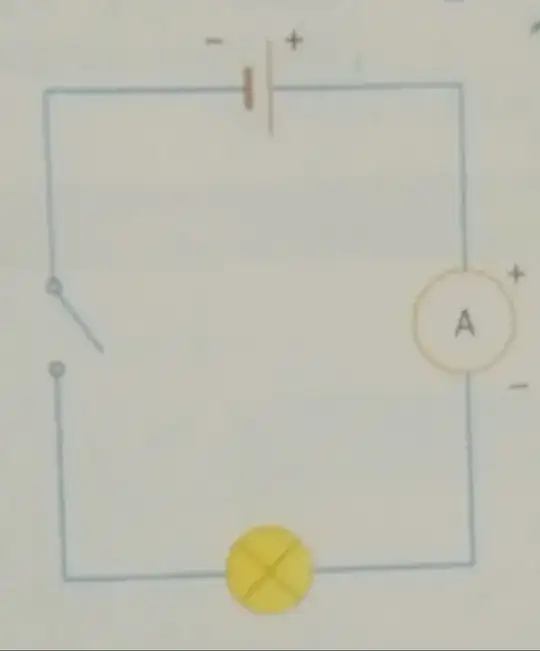¤The statement above this circuit in my book reads 'the (conventional) current should flow into the ammeter through the positive red terminal and leave through the negative black terminal', as the switch is open here, in a real setup ammeter would not show the electric current measurement as the current won't be able to pass to it, so why do we still use Conventional current,isn't it actually wrong?
3 Answers
“Conventional” current (from + to - ) is used because it is more convenient mathematically to think in terms of positive charge flow. In most cases, it makes no difference which charge is moving, but for calculations some right-hand-rules change to left-hand-rules. A measurement of voltage polarity in the Hall effect does tell us that it is the negative charges which are moving in a conductor.
- 12,280
in a real setup ammeter would not show the electric current measurement as the current won't be able to pass to it, so why do we still use Conventional current, isn't it actually wrong?
Not exactly. One thing is clear that the current leave from positive terminal of the battery to negative terminal of bettery. Now for the ammeter, It has two terminal, One postive and other negative. Now If current get into from positive and leave from negative means if the terminal sign match, the current shown in ammeter will be positive and if they not, the current shown in ammeter will be negative. That's doesn't matter (that's doesn't change the magntitude of the current).
- 12,211
In reality, it is negatively charged electrons that flow. There is no flow with the switch open. When the switch is closed electrons flow from the - battery terminal though the ammeter (- to + direction) back to the + battery terminal. The actual flow of - charges is equivalent to the flow of + charges in the opposite direction, and circuit theory models current as flow of + charges (when in reality - charges flow in the opposite direction). So circuit theory would say current flows from the + battery terminal though the ammeter (+ to - direction) back to the - battery terminal, when the switch is closed. With the switch open, the side of the switch connected to the - battery terminal has an electric potential equal to the electric potential of the battery - terminal, and the other side of the switch and both sides of the ammeter all have an electric potential equal to the electric potential of the battery + terminal.
- 9,601
